
How to Use 2 channel 12 V relay module: Examples, Pinouts, and Specs
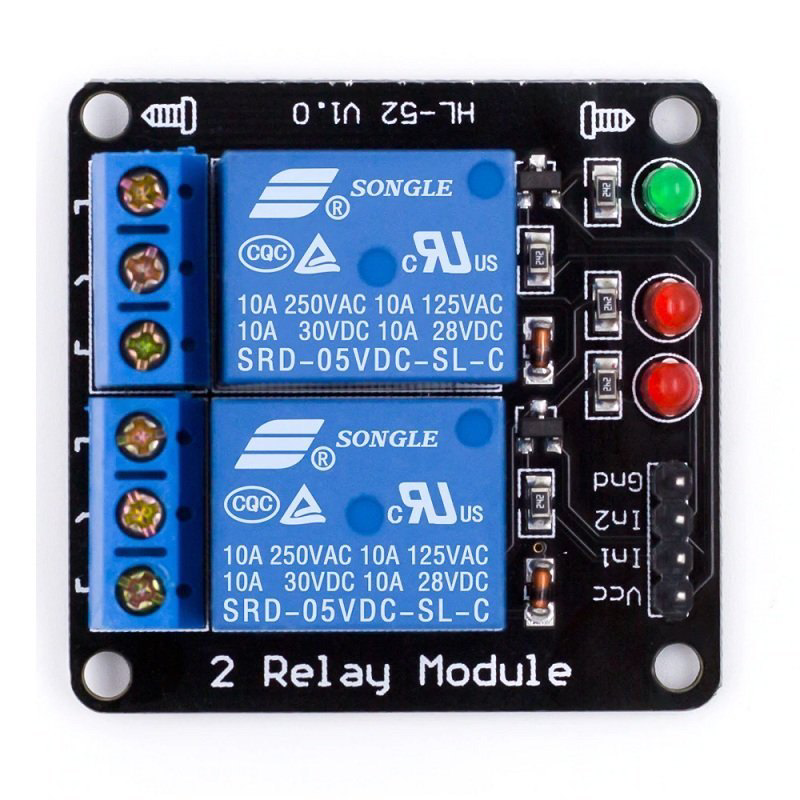
 Design with 2 channel 12 V relay module in Cirkit Designer
Design with 2 channel 12 V relay module in Cirkit DesignerIntroduction
The 2 Channel 12V Relay Module is a versatile electronic component designed to control high-power devices using low-power signals. Each relay on the module can switch devices on and off with a 12V signal, making it ideal for applications where you need to control high-voltage or high-current devices such as lights, motors, and other electrical appliances. This module is commonly used in home automation, industrial automation, and various DIY projects.
Explore Projects Built with 2 channel 12 V relay module
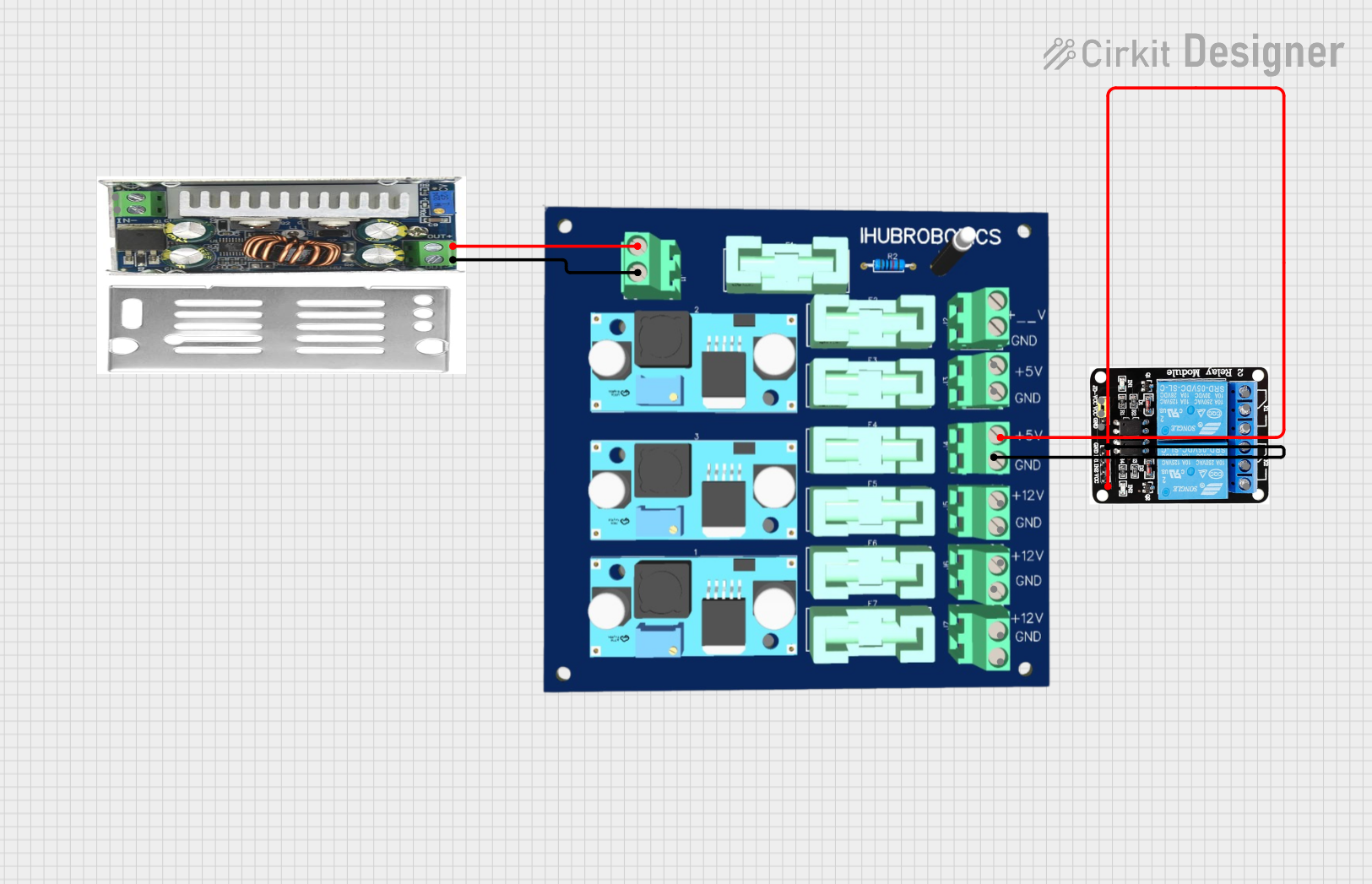
 Open Project in Cirkit Designer
Open Project in Cirkit Designer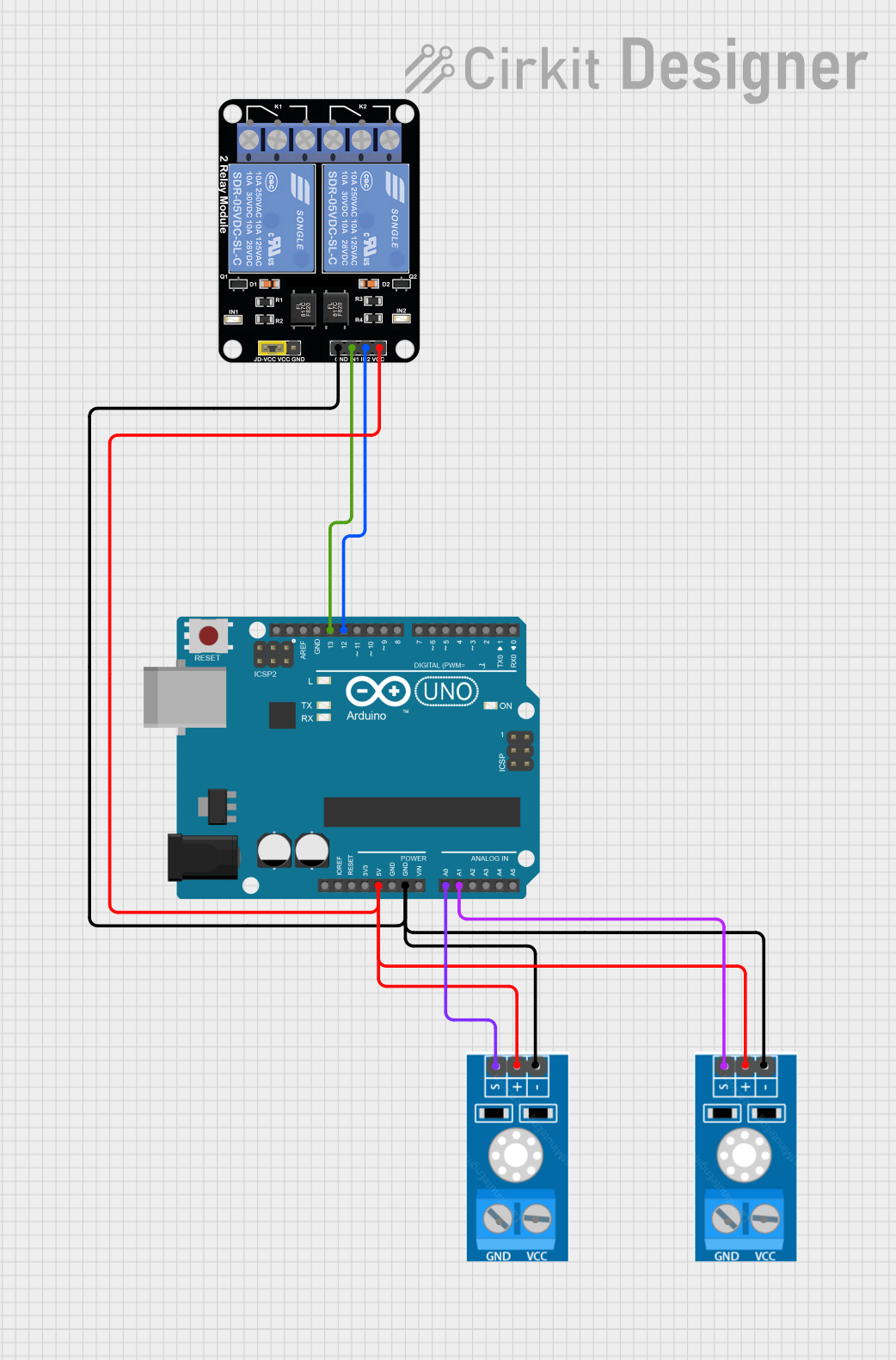
 Open Project in Cirkit Designer
Open Project in Cirkit Designer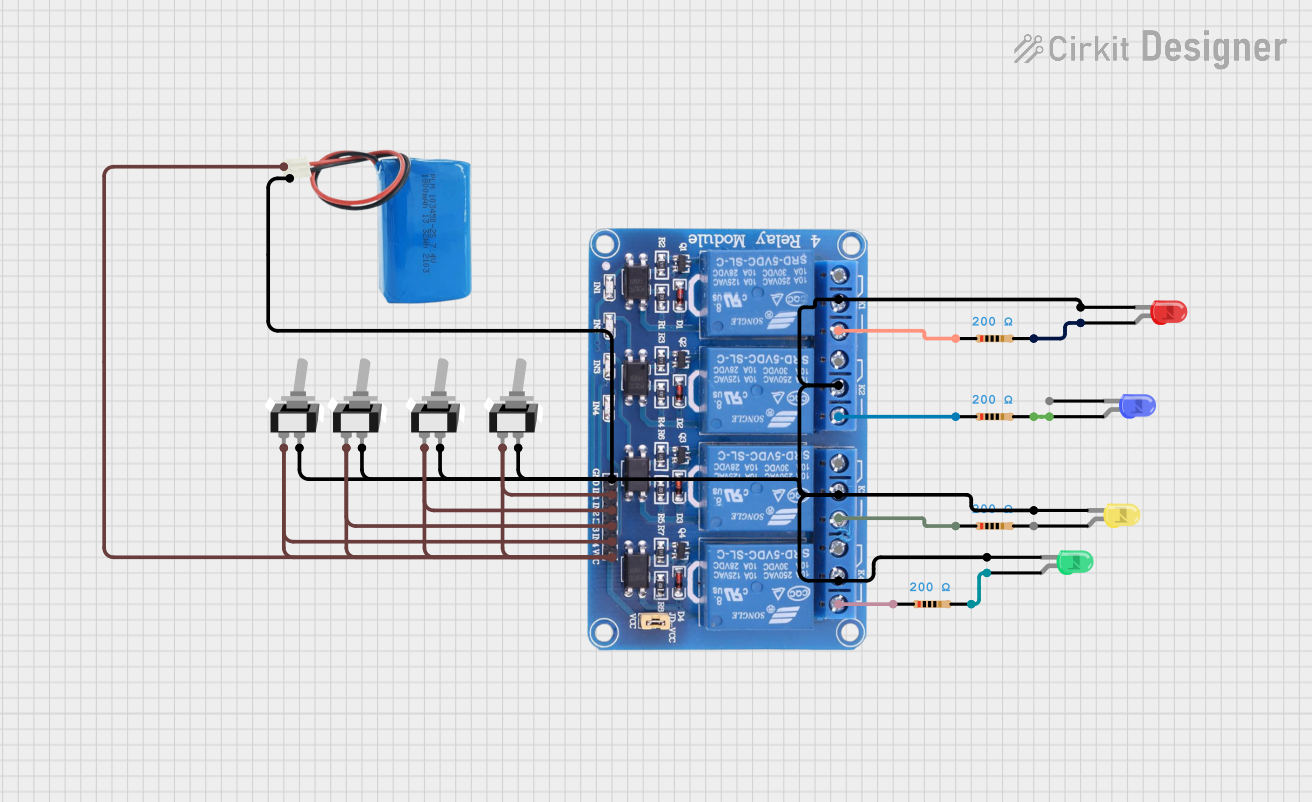
 Open Project in Cirkit Designer
Open Project in Cirkit Designer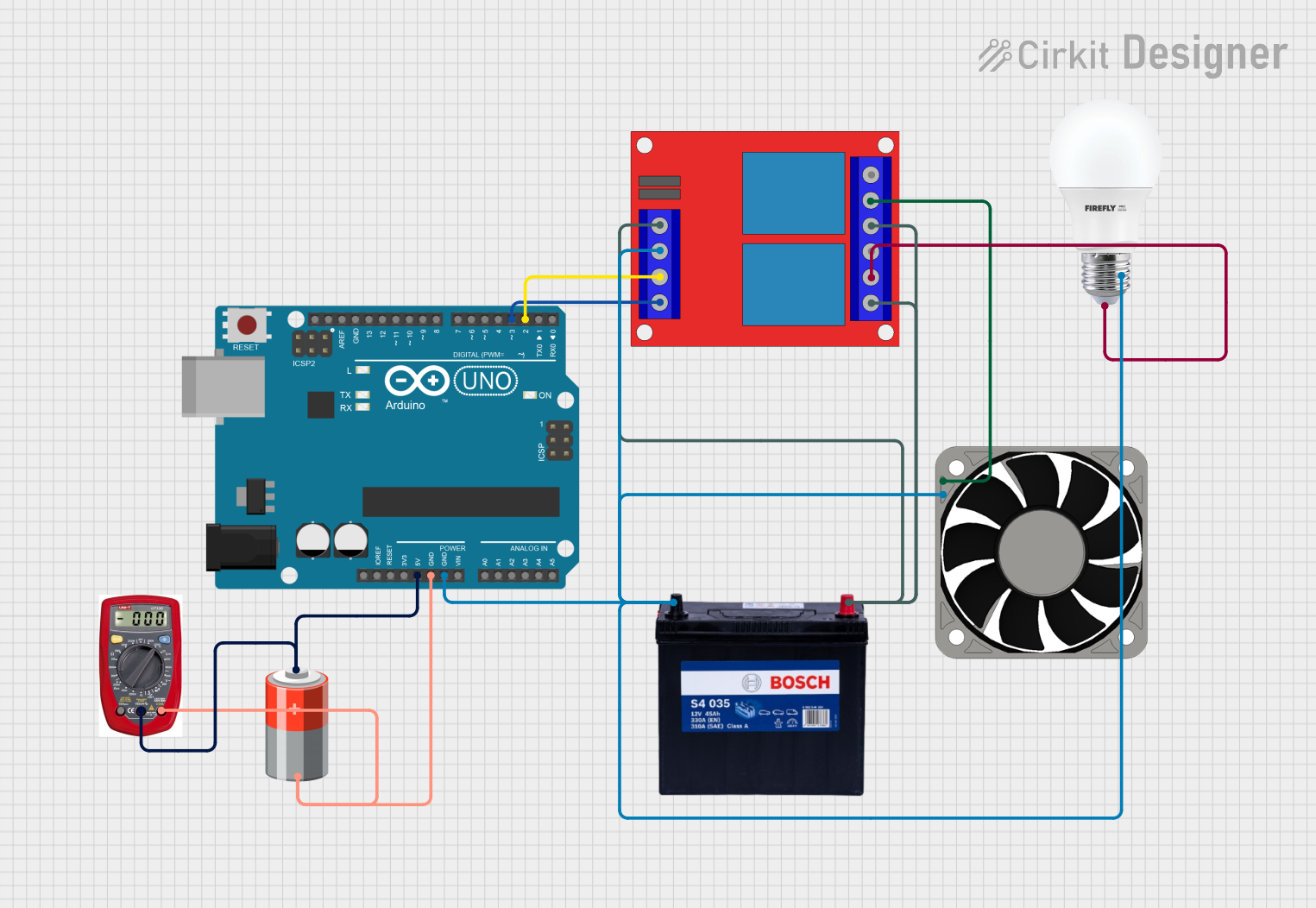
 Open Project in Cirkit Designer
Open Project in Cirkit DesignerExplore Projects Built with 2 channel 12 V relay module

 Open Project in Cirkit Designer
Open Project in Cirkit Designer
 Open Project in Cirkit Designer
Open Project in Cirkit Designer
 Open Project in Cirkit Designer
Open Project in Cirkit Designer
 Open Project in Cirkit Designer
Open Project in Cirkit DesignerTechnical Specifications
Key Technical Details
| Parameter | Value |
|---|---|
| Operating Voltage | 12V DC |
| Trigger Voltage | 5V DC |
| Current Consumption | 15-20mA per relay |
| Relay Type | SPDT (Single Pole Double Throw) |
| Max Switching Voltage | 250V AC / 30V DC |
| Max Switching Current | 10A |
| Dimensions | 50mm x 40mm x 20mm |
Pin Configuration and Descriptions
Relay Module Pinout
| Pin Name | Description |
|---|---|
| VCC | Connect to 12V DC power supply |
| GND | Ground |
| IN1 | Control signal for Relay 1 (active low) |
| IN2 | Control signal for Relay 2 (active low) |
| COM1 | Common terminal for Relay 1 |
| NO1 | Normally Open terminal for Relay 1 |
| NC1 | Normally Closed terminal for Relay 1 |
| COM2 | Common terminal for Relay 2 |
| NO2 | Normally Open terminal for Relay 2 |
| NC2 | Normally Closed terminal for Relay 2 |
Usage Instructions
How to Use the Component in a Circuit
Power Supply:
- Connect the VCC pin to a 12V DC power supply.
- Connect the GND pin to the ground of the power supply.
Control Signals:
- Connect the IN1 pin to a digital output pin of your microcontroller (e.g., Arduino).
- Connect the IN2 pin to another digital output pin of your microcontroller.
Load Connections:
- Connect the device you want to control to the COM1 and NO1/NC1 terminals for Relay 1.
- Connect another device to the COM2 and NO2/NC2 terminals for Relay 2.
Important Considerations and Best Practices
- Ensure that the power supply voltage matches the operating voltage of the relay module (12V DC).
- Use appropriate flyback diodes across the relay coils to protect your microcontroller from voltage spikes.
- Avoid exceeding the maximum switching voltage and current ratings to prevent damage to the relays.
- Use proper insulation and safety measures when dealing with high-voltage AC loads.
Example Code for Arduino UNO
/*
* Example code to control a 2 Channel 12V Relay Module using Arduino UNO.
* This code will alternately switch the relays on and off every second.
*/
const int relay1Pin = 7; // Digital pin connected to IN1
const int relay2Pin = 8; // Digital pin connected to IN2
void setup() {
// Initialize the relay control pins as outputs
pinMode(relay1Pin, OUTPUT);
pinMode(relay2Pin, OUTPUT);
// Initially turn off both relays
digitalWrite(relay1Pin, HIGH); // Relay is active low
digitalWrite(relay2Pin, HIGH); // Relay is active low
}
void loop() {
// Turn on Relay 1 and turn off Relay 2
digitalWrite(relay1Pin, LOW); // Activate Relay 1
digitalWrite(relay2Pin, HIGH); // Deactivate Relay 2
delay(1000); // Wait for 1 second
// Turn off Relay 1 and turn on Relay 2
digitalWrite(relay1Pin, HIGH); // Deactivate Relay 1
digitalWrite(relay2Pin, LOW); // Activate Relay 2
delay(1000); // Wait for 1 second
}
Troubleshooting and FAQs
Common Issues Users Might Face
Relays Not Activating:
- Ensure that the VCC and GND pins are properly connected to a 12V DC power supply.
- Verify that the control signals (IN1 and IN2) are receiving the correct voltage levels from the microcontroller.
Microcontroller Resetting:
- This could be due to voltage spikes caused by the relay coils. Use flyback diodes across the relay coils to mitigate this issue.
Load Not Switching:
- Check the connections to the COM, NO, and NC terminals.
- Ensure that the load does not exceed the maximum switching voltage and current ratings of the relay.
Solutions and Tips for Troubleshooting
- Double-check Wiring: Ensure all connections are secure and correctly placed.
- Use Flyback Diodes: Place diodes across relay coils to protect the microcontroller from voltage spikes.
- Check Power Supply: Make sure the power supply provides a stable 12V DC output.
- Test Relays Individually: Isolate and test each relay to ensure they are functioning correctly.
By following this documentation, you should be able to effectively use the 2 Channel 12V Relay Module in your projects, ensuring reliable control of high-power devices with low-power signals.